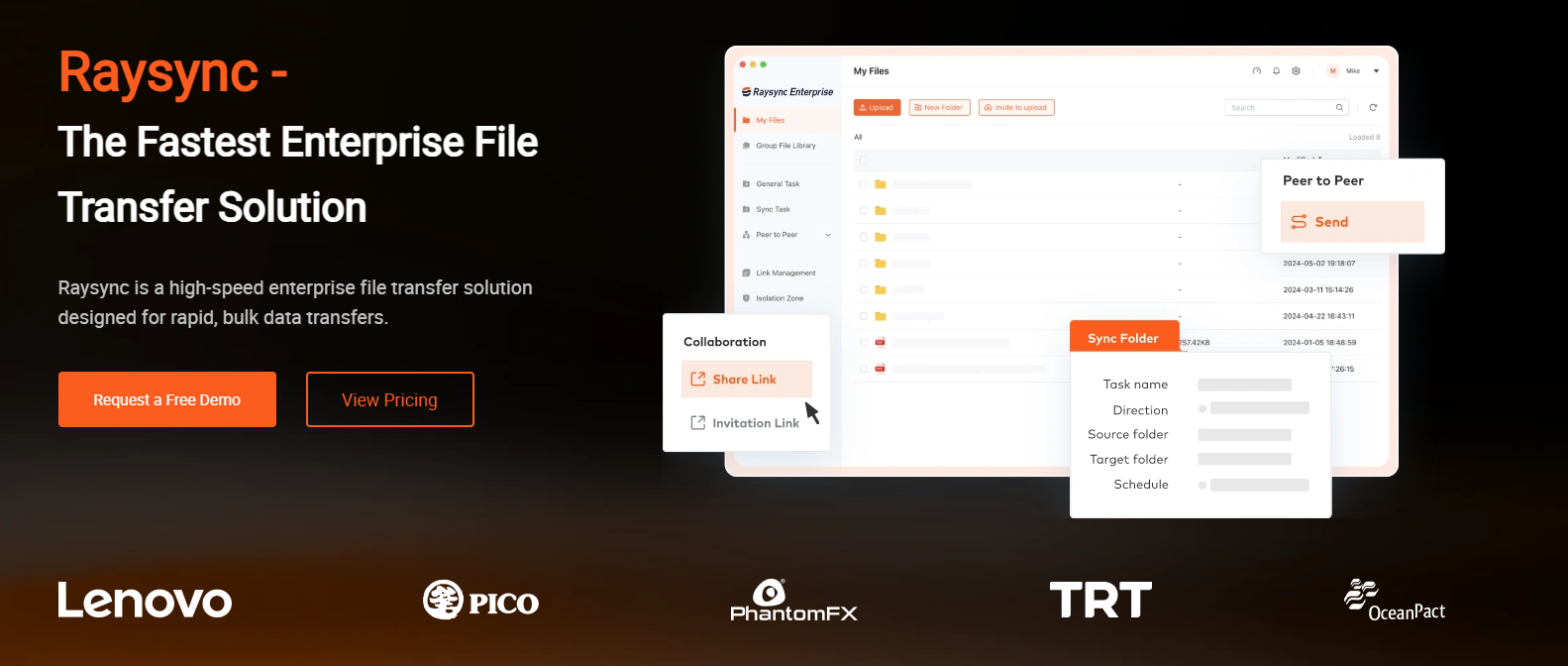The Future of File Sharing: How We Will Receive Large Files
July 19, 2025.png)
The Ultimate Guide to Receive Large Files Quickly and Securely
Gone are the days when email attachments ruled the file-sharing game. With huge videos, design files, and data sets flying around, we need smarter ways to receive big files. Whether you are a freelancer collecting assets or a company handling large client uploads, the need for speed, security, and simplicity has never been more important.
This blog post is your one-stop solution to explore the best way to receive large files. We will explain why it’s a challenge, what makes a tool helpful, and which platforms stand out.
Ready to find out the best way to receive large files? Let’s dive in.
Why Receiving Large Files is a Challenge
The process of receiving large files sounds simple until you actually try it. Traditional email? Nope! File size limits kill the deal. Cloud uploads? Sometimes slow, often unreliable. And let’s not even talk about confusing permissions and clunky download links.
Then there’s the problem of speed. A slow upload from one end means a painfully long wait on yours. Add poor internet, time zones, and file format issues, and things get messy. Businesses can lose hours trying to manage a simple file handoff.
So what’s the deal? We need better tools, ones built for large files. That means faster transfers, smarter storage, and smoother collaboration.
What Makes a Good Solution for Receiving Large Files
A good file receiving solution should do more than “just work.” It should make your life easier. That means fast upload speeds (even for giant files), strong security to keep data safe, and an easy way for others to send you files without confusion.
Other key things? No login required for the sender, clear folder organization, and the ability to handle dozens, even hundreds, of files at once. Bonus points if you can customize the upload form or set expiration dates.
For businesses, advanced features like automation, bandwidth control, or branding are a plus when you have to receive large files. However, simplicity and ease come first for individuals. Let’s look at some tools that deliver all of that.
Top Tools & Methods for Receiving Large Files
Some file receiving tools are built for enterprise use, while others are ideal for solo freelancers or creative teams. Below are the best tools and methods, from enterprise-grade platforms to quick browser-based services.
1. Raysync [Enterprise-Grade]

Raysync is built for businesses that handle massive amounts of data. It uses a high-speed transfer protocol to move files up to 100x faster than traditional methods. Whether collecting videos from global teams or receiving data backups from multiple branches, Raysync is one of the best way to receive large files.
Its web-based dashboard is simple to use, and the platform supports advanced features like scheduled tasks, role-based access, and bandwidth control. You can customize the file-receiving portal to match your brand and automate your workflows.
Pros of Raysync:
- Clean, user-friendly web interface
- High-end security with complete encryption
- Global delivery with minimal packet loss
- Bandwidth control for traffic management
- Great for massive and frequent file transfers
- Scalable for enterprise teams
- Blazing fast transfers with UDP acceleration
Cons of Raysync:
- Too advanced and feature-rich for occasional and small-scale users
2. Dropbox File Request
Dropbox’s file request feature is perfect if you want people to send you files directly into your Dropbox folder, even if they do not have an account. Just create a request, share the link, and wait for the uploads.
It’s a great option for freelancers, students, or teams collecting work from clients, vendors, or partners. Everything stays organized and secure in your own Dropbox account.
Pros of Dropbox:
- Easy for non-users to upload
- Files go straight to your Dropbox
Cons of Dropbox:
- Limited customization of request forms
- File size limits apply based on the plan
3. WeTransfer
WeTransfer is a suitable tool if you have to receive large files without signups or confusion. You can generate a download link or use the Pro version to request files directly. It’s perfect for creative professionals, freelancers, or quick one-time exchanges.
With WeTransfer Pro, you get added security, more storage, and the ability to set expiration dates or customize links.
Pros of WeTransfer:
- No signups needed for senders
- Fast and simple to use
Cons of WeTransfer:
- Files expire after a short time
- The basic version has limited storage
4. File Request Pro
This tool is built to receive big files. File Request Pro integrates with Dropbox, Google Drive, and OneDrive, giving you complete control over how users upload content. You can add custom branding, fields, and even email notifications. It’s an excellent choice for businesses that need polished, professional file collection forms without complicated coding.
Pros of File Request Pro:
- Fully customizable upload forms
- Integrates with popular cloud tools
Cons of File Request Pro:
- Paid tool — no strong free tier
- Slight learning curve for full setup
5. Filebox
Filebox is a modern and minimal tool that allows you to receive big files fast, without any fuss. It’s cloud-based, browser-friendly, and great for people who want a simple dropbox-style experience without paying for a huge storage plan. You can create custom links and folders for different projects and easily manage what’s coming in.
Pros of Filebox:
- Clean, easy-to-use interface
- Free and paid plans available
Cons of Filebox:
- Lacks advanced features like automation
- Not ideal for enterprise-level needs
6. Digital Pigeon
Digital Pigeon is designed for creatives, photographers, video editors, and agencies regularly receiving big files. It offers fast uploads, strong branding options, and even preview tools for visual files. You can organize files by client or project, and the system sends you alerts as files come in.
Pros of Digital Pigeon:
- Great branding and visual previews
- Fast transfers for media-heavy files
Cons of Digital Pigeon:
- More expensive than simpler tools
- Better suited for creative industries
7. Google Drive
Google Drive is widely used and makes it easy to receive large files via shared folders or links. You can create a folder, set permissions, and share the link with your sender. It’s reliable and simple for anyone with a Google account. It’s not the fastest option for large files, but it gets the job done for many people.
Pros of Google Drive:
- Easy and familiar for most users
- Works across devices and platforms
Cons of Google Drive:
- Slower uploads for huge files
- Requires the sender to have a Google account
Choosing the Right Tool for Your Needs
Choosing the best way to receive large files depends on your workflow. Something like Google Drive, WeTransfer, or Dropbox File Request is often enough for casual use. They are simple, familiar, and good for occasional transfers.
If you are handling files professionally, say as a videographer, agency, or IT team, more advanced tools like File Request Pro, Digital Pigeon, or Raysync might suit you better. Look at how often you receive files, who is sending them, and how secure and fast it all needs to be.
Pick the one that fits your day-to-day needs, not just the most prominent name. That’s the real win!
Final Words
Receiving big files does not have to be frustrating. With the right tool, you can receive large files in a smooth, fast, and enjoyable manner. Whether you get huge videos, client documents, or team updates, these tools make it easier.
If you are a business that needs speed and reliability without compromise, Raysync is one of the best way to receive large files. It is designed for serious file handling and grows with your needs, whether you are working locally or globally.
No matter your size or budget, a suitable solution exists for you. Happy receiving!
You might also like

Industry news
March 14, 2025Upload speed very slow? Learn how to diagnose and fix slow upload speeds with these 6 expert steps.

Industry news
October 29, 2025Discover how slow file transfers drain time, money, and productivity in media and entertainment production. Learn how Raysync helps studios move 8K and 4K content up to 100x faster with enterprise-grade security.

Industry news
April 30, 2025Discover why is Dropbox so slow and learn effective solutions to boost its performance. Explore alternatives like Raysync for faster file transfers.